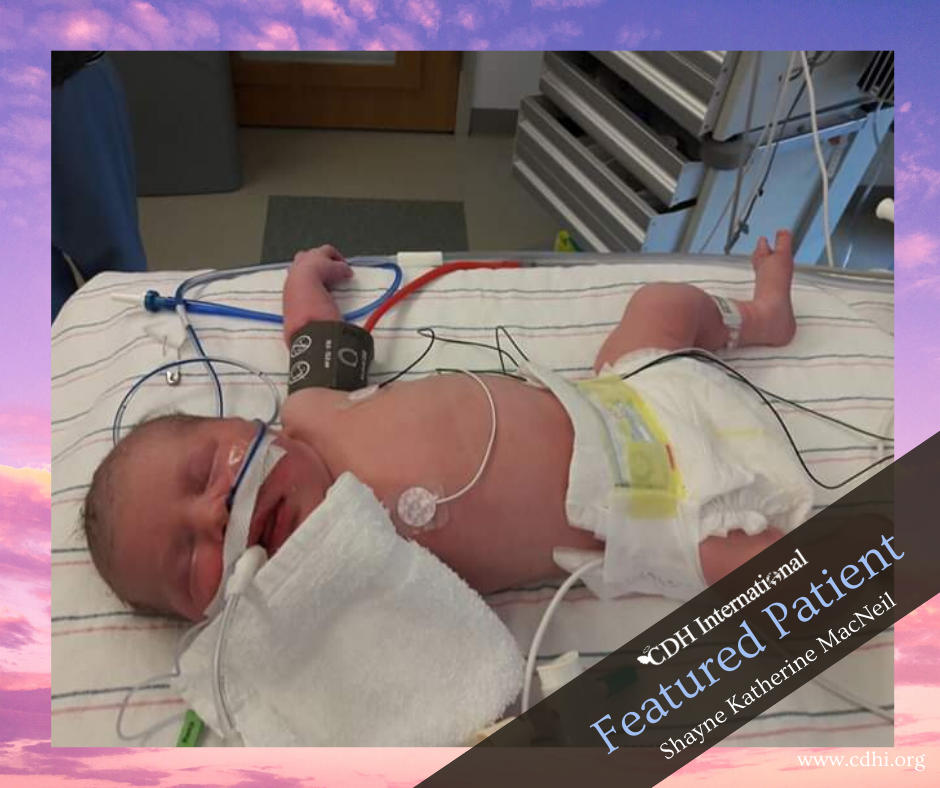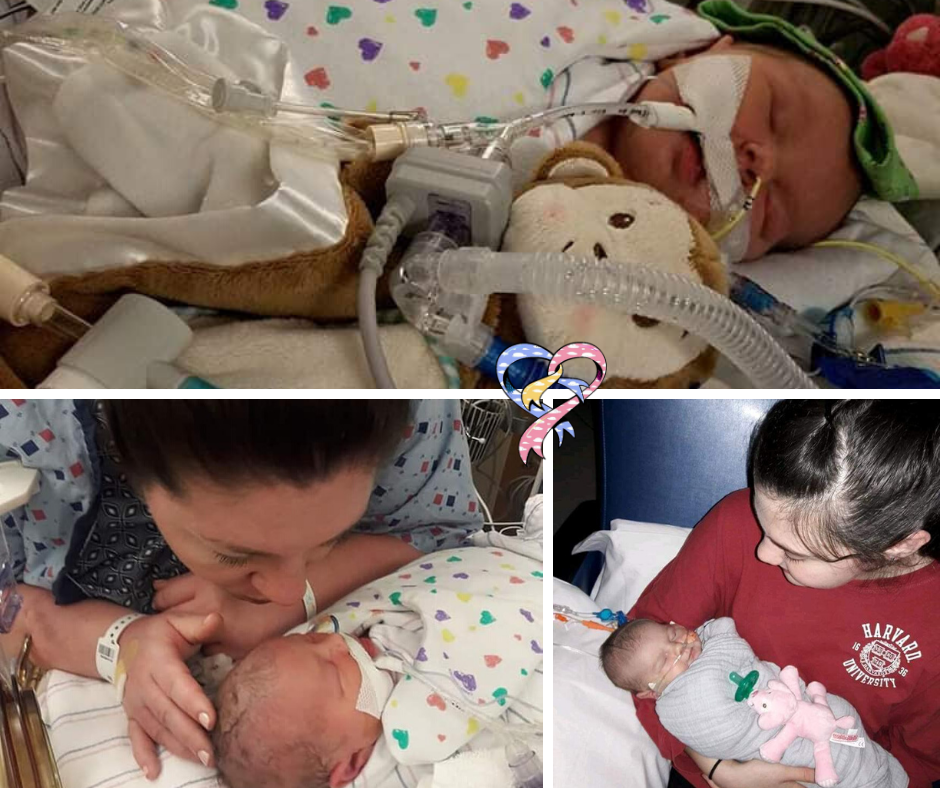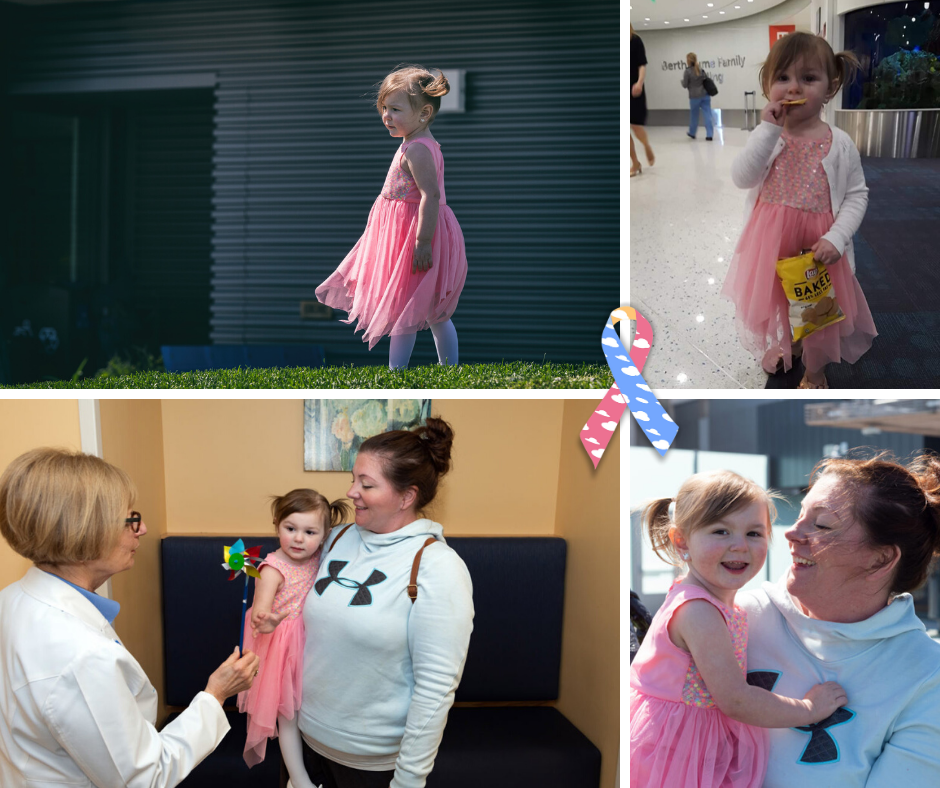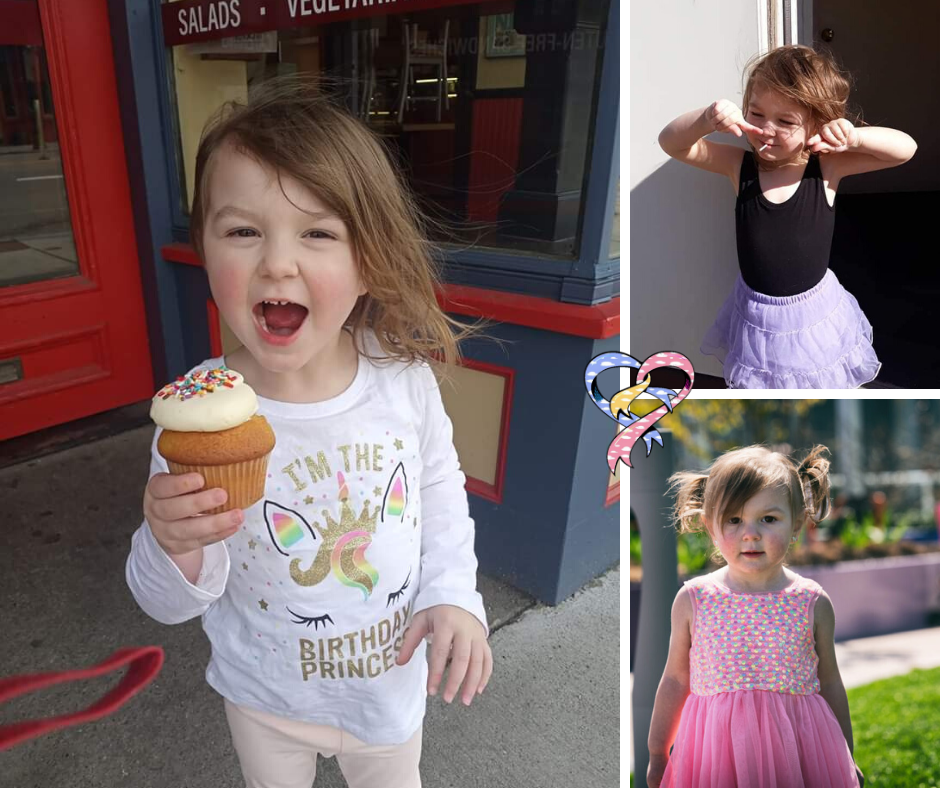Featured patient of the week is CDH survivor Shayne MacNeil. She is the daughter of Lyndsay and Mike MacNeil. Shayne is a thriving 3 year old, very typical, funny! She does dance class (tap and ballet) and will attend preschool twice weekly in September. Shayne’s CDH journey was shared on the Boston Children’s Website, please see her story at https://discoveries.childrenshospital.org/from-fear-to-hope-with-cdh/:
Lyndsay MacNeil is a nurse, but even she — like most parents — had never heard of congenital diaphragmatic hernia (CDH) until she was pregnant with her daughter Shayne. During a routine ultrasound, her clinicians at Brigham and Women’s Hospital detected an anomaly in the fetus, which they suspected was CDH. In this serious condition, a hole is present in the diaphragm, the muscle that the body uses to breathe. This can cause the intestines and other abdominal organs to move into the chest, which prevents normal lung development.
Severe cases of CDH can be life-threatening. Indeed, when Lyndsay and her husband, Mike, returned home from the appointment, their online searches did nothing to ease their worries. “Based on our Internet research, we believed there was a 50-50 chance that Shayne wouldn’t make it,” she remembers. “It felt like a death sentence.”
Care Center (AFCC) at Boston Children’s Hospital. The next day, she and Mike met with clinicians at the AFCC, including registered nurse Donna Morash and Dr. Jason Smithers, a Boston Children’s surgeon at the time. During the hours-long visit, Lyndsay noticed that Morash was taking copious notes, which she later gave the couple. “She knew we were getting hard news and that it would take a while to sink in,” says Lyndsay. “She wrote everything down for us, and that was special.”
They were in for a shock. Further imaging tests revealed that Shayne had left lung tissue visible, which should work to her advantage. “They told us we would probably take home a healthy baby,” says Lyndsay. “It was a completely different feeling from 24 hours earlier. Now we had hope.”
When Shayne was born at Brigham and Women’s that March, the team from the AFCC was on hand to ensure a safe transfer to nearby Boston Children’s. Unlike many infants with CDH, Shayne didn’t require lung support from extracorporeal membrane oxygenation (ECMO), but she did need surgery. “She was a little puffy afterward, but she looked great to us,” says Lyndsay.

Her health continued to improve from there. When Shayne was 11 days old, Lyndsay finally got to hold her. “And I held her for about five hours straight,” she says. Exactly a month after she was born, she went home.

Now 2 years old, Shayne is “a typical toddler with lots of attitude,” says her mom. She loves dancing, laughing, and hanging out with her friends and two older siblings. When she returns to the CDH Program’s outpatient clinic, she’s happy to see Morash, along with Dr. Jill Zalieckas, Dr. Catherine Sheils, and other clinicians for follow-up care.

Aside from some minor colds, Shayne hasn’t had any lasting consequences of the CDH — an outcome the MacNeils couldn’t have imagined after that first devastating ultrasound test. “She’s doing so awesome,” says Lyndsay. “And I really believe that the teams from Boston Children’s and Brigham and Women’s working so closely together has been key to her success.”






